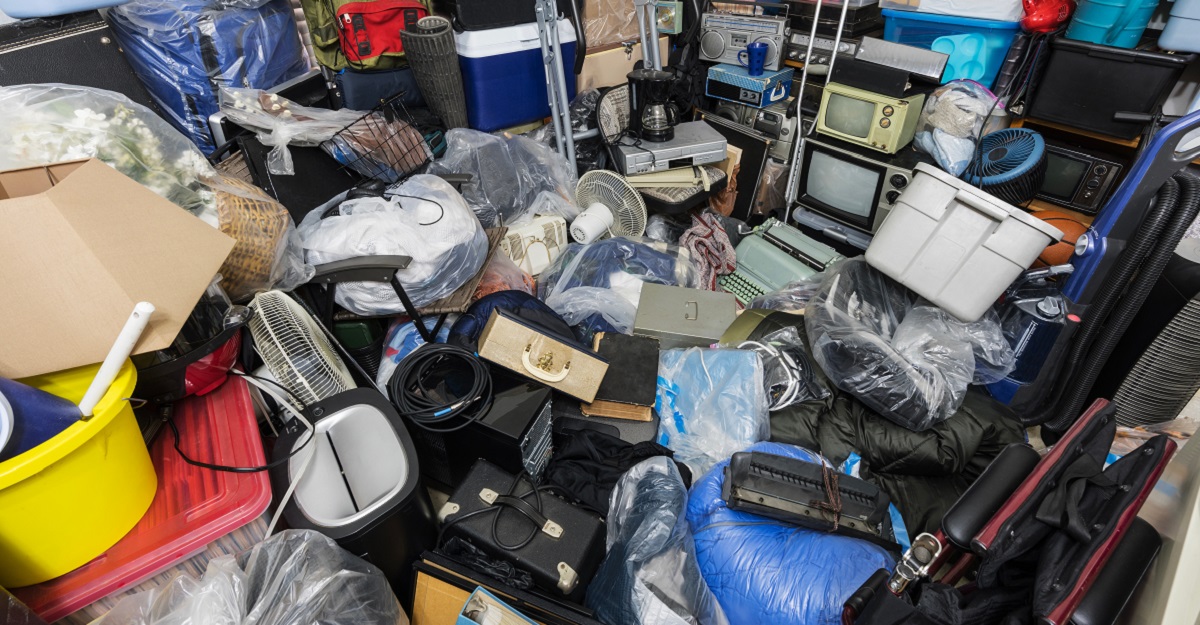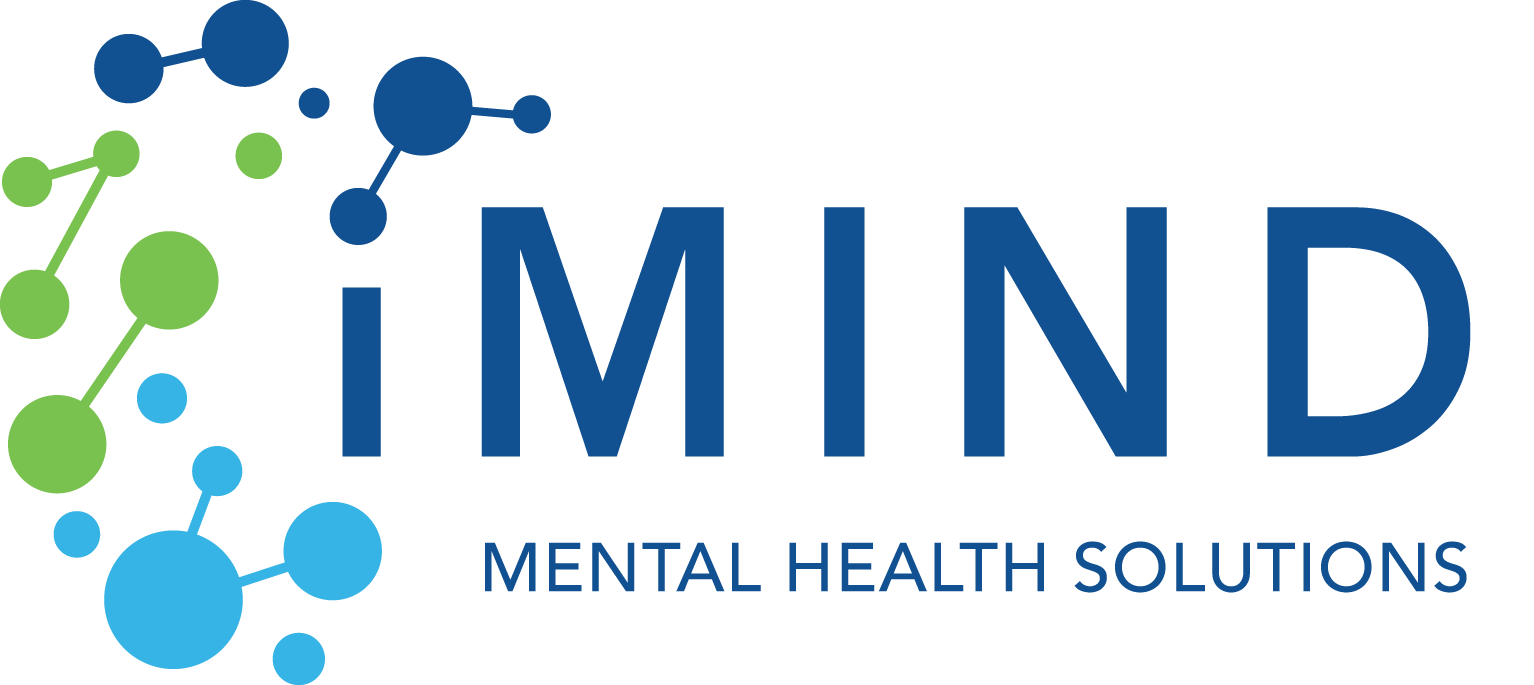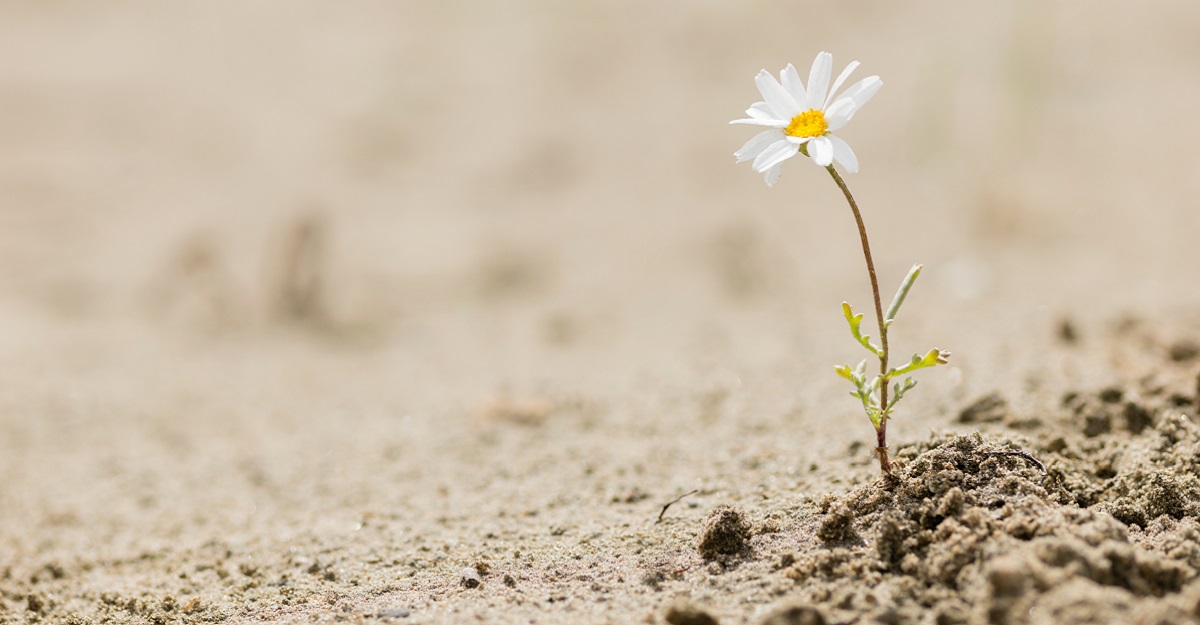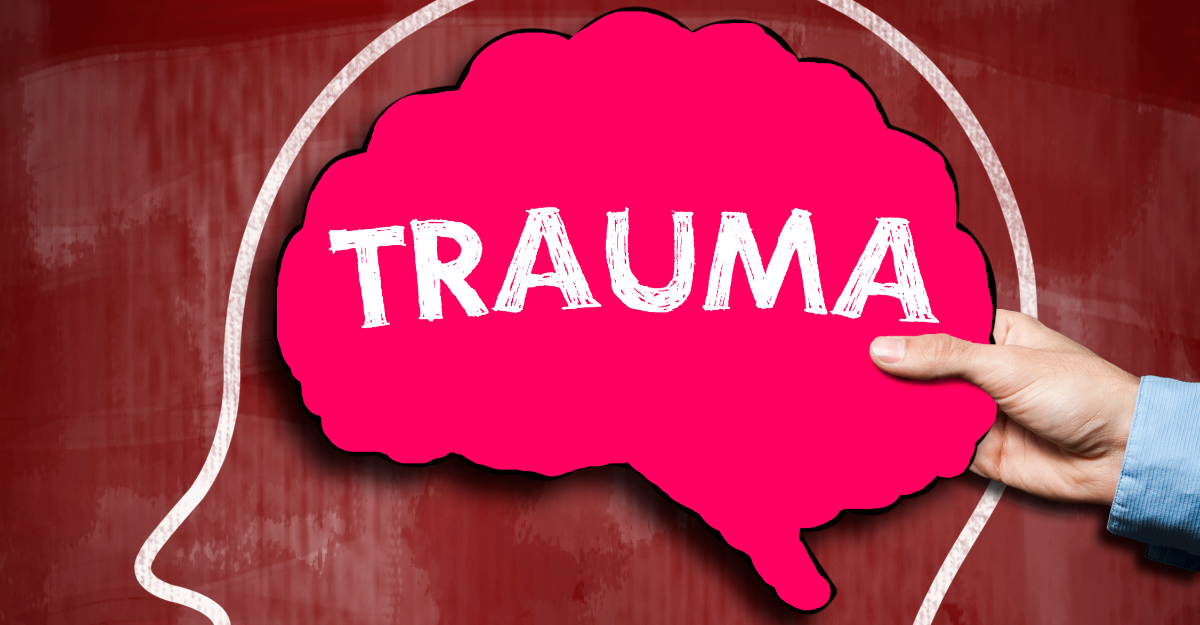Hoarding Therapy: What is it? Does it Work?
Published By Justin Baksh, LMHC, MCAP
January 4, 2024

Hoarding disorder transcends the stereotype of being merely a “pack rat.” As the Hoarders show taught us, when you look beyond mountains of clutter, you see a person in mental distress. That’s because hoarding disorder is more than just an accumulation of objects; it is a complex and poorly understood mental health condition that affects millions of people. Hoarding disorder deeply impacts not only the person hoarding but also their loved ones and neighbors.
In response to this growing need for understanding and support, hoarding therapy has emerged as a beacon of hope. This therapeutic approach, typically centered around cognitive behavioral therapy (CBT), aims to address the underlying emotional and cognitive aspects of hoarding. By focusing on changing the thoughts and behaviors that fuel the disorder, hoarding therapy offers a pathway to reclaim space – both physical and mental.
Understanding Hoarding Disorder
“Randy Frost, PhD, remembers a client excitedly showing him a large plastic bag crammed with bottle caps. ‘She thought they were beautiful,’ explains Frost, a professor of psychology at Smith College in Massachusetts who studies and treats hoarding disorder…
‘When I look at a bottle cap, my brain thinks, ‘Where can I find a wastebasket?’ But in her brain, there are all of these rich associations about the color, shape, texture, and what an artist might have been able to do with the bottle caps, even though she wasn’t an artist herself,’ he says. ‘In many ways, hoarding is an ability to appreciate physical characteristics that goes far beyond what the rest of us can do.’”
–Kirsten Weir, Treating People with Hoarding Disorder, American Psychological Association
Hoarding disorder is marked by an intense need to keep items, regardless of their actual value, and an equally strong resistance to discarding them. This results in an accumulation of clutter that can radically interfere with daily life, health, and emotional wellbeing. It is more than just collecting or being disorganized; it is a deep-seated issue that affects mental as well as physical health.
For many years, hoarding disorder was considered to be a type of obsessive compulsive disorder. In 2013, reflecting a deeper understanding of the condition, hoarding disorder was officially recognized as its own diagnosis in the Diagnostic and Statistical Manual of Mental Disorders, or the DSM-5.
OCD vs. Hoarding Disorder
Among other distinguishing symptoms, people with OCD-related hoarding find the clutter to be undesirable and it creates stress for them, while those with hoarding disorder find their possessions to be valuable and hard to part with.
There is still a higher overlap of the two conditions than you would see in the general population: About 25 percent of people with OCD also have hoarding disorder, much higher than the general population rate of 2 to 3 percent. Hoarding can be a symptom of OCD. It’s also true that roughly 20 percent of people with hoarding disorder have other OCD symptoms, while the general population is affected by OCD at a rate of 1.2 percent.
However, co-occurrence of mental health conditions is not uncommon. In fact, about three in four people with hoarding disorder have another mental illness, including generalized anxiety disorder and social anxiety. Hoarding disorder most frequently co-occurs with depression, with about half of those with hoarding disorder also suffering from it.
Hoarding Disorder Symptoms & Behaviors
- Excessive Accumulation: People who have hoarding disorder will accumulate a large number of items, including newspapers, clothes, containers, and even trash, which appear useless to others.
- Difficulty Discarding: A perceived need to save useless items and distress associated with letting them go fuels a person’s difficulty in parting with possessions. Often there is a problem discerning which items are useful and which are not. To a person with hoarding disorder, everything has value and everything is important.
- Cluttered Living Spaces: Using a room for its intended purpose becomes impossible in the cluttered home of someone with hoarding disorder. It might be hard to move around, cook, or even sleep due to the clutter
- Emotional Distress: The thought of discarding items can cause significant anxiety, indecision, and discomfort.
- Social Isolation: Due to embarrassment or fear of judgment, people with hoarding disorder might avoid inviting others into their home, leading to isolation and loneliness.
What Causes Hoarding Disorder?
“I was married to a metal hoarder. He was a machinist, so it makes some sense. But it wasn’t just metal. His hoarding started in childhood.
When we started dating in our early 20s, he was still living at home, upstairs, but his old bedroom in the basement was also ‘his’ room. This one was filled floor-to-ceiling, wall-to-wall. Every toy he ever owned, magazines, maps — I never got a good grasp of what all was in that room, but it was called his room and pretty much everyone left it alone. He spent hours down there, ‘organizing’ and ‘sorting’ and just being with his stuff…
I think it was sort of [a] mental pacifier. Distract yourself with enough chaos and bad thoughts won’t get in. He had severe emotional problems as a child that were never dealt with…”
-Gina M., Through The Mess, Darkly: Or How Living with a Compulsive Hoarder Destroyed My Family, leoweekly,.com

Mental Health Disorders
Issues such as depression and anxiety, as mentioned previously, are commonly seen in individuals with hoarding disorder. Conversely, hoarding can also be a symptom of other mental health disorders, such as obsessive-compulsive disorder (OCD). Up to half of people with hoarding disorder are also clinically depressed. ADHD is also seen at higher levels in those with hoarding disorder.

Genetic Influences
Studies involving twins have found that as much as 50 percent of the variance in hoarding behaviors could be genetic. This indicates a stronger genetic influence for hoarding disorder compared to general anxiety symptoms, which have about 30 percent heritability, but less than that for conditions like ADHD, which carries an 80 percent heritability rate.

Environmental Triggers
Traumatic life events or loss can trigger hoarding behavior. It sometimes begins after a stressful event such as the death of a loved one or a divorce. Hoarding disorder can also be related to experiences in childhood such as losing possessions, not having possessions, or having possessions thrown away or taken. Not being properly cared for, living in poverty, and money worries in the in the childhood home can also be associated with hoarding disorder.
The Hoarding Brain
“These [study] results suggest that hoarders’ decisions about possessions are hampered by abnormal activity in brain regions used to identify the emotional significance of things. ‘They lose the ability to make relative judgements, so the decision becomes absolutely overwhelming and aversive to them,’ [Dr. David Tolin of Hartford Hospital and Yale University and leader of the research team] says. The scientists believe that these brain abnormalities are specific to hoarding, and separate the disorder from OCD.”
-National Institutes of Health, Distinct Brain Activity in Hoarders
A landmark 2012 study using functional magnetic resonance imaging showed differences in the brain function among people with hoarding disorder. Specifically, the anterior cingulate cortex and the insula – both believed to be involved in processing emotion – were overactive when people with hoarding disorder were making decisions about whether to discard or keep their possessions. However, these same regions were underactive when it came to those of others.
With their own things, people with hoarding disorder “took longer to make decisions and reported greater anxiety, indecisiveness and sadness than other groups,” according to researchers.
Hoarding Disorder Treatment
When it comes to treating hoarding disorder, there’s a light at the end of the tunnel, and it often comes in the form of cognitive-behavioral therapy (CBT). CBT is like a guiding hand that helps individuals understand and change their hoarding behaviors. Medication can also be a good adjunct treatment for hoarding disorder.

Cognitive Behavioral Therapy for Hoarding
At its core, CBT for hoarding disorder is about zeroing in on the thoughts and beliefs that lead to hoarding and reshaping them into something more constructive. It is a rewiring of the brain’s response to the urge to hoard.
CBT also equips individuals with practical skills to combat hoarding. For example, it teaches people how to distinguish between items which are truly needed and those that are not, and how to organize possessions more effectively. Clients also learn to question and challenge the thoughts that make them feel they need to keep everything.
CBT for hoarding also involves resisting the urge to acquire more, with exercises to help resist the temptation to add more things to the pile. Gradually, individuals are guided to sort through their possessions, learning to make decisions about what to keep and what to discard. Emotional coping skills are needed here and CBT also helps in managing the anxiety and distress that comes with parting from possessions.
People are also encouraged to rebuild connections with friends and family and join in on some social activities. By reducing isolation, individuals with hoarding disorder are not only able to receive support and motivation from others, but also gain external perspectives that can be crucial in addressing and modifying their hoarding behaviors.
Group CBT therapy has been shown to be effective. When those suffering with hoarding disorder don’t feel they have a problem or are resistant, motivational interviewing can disarm their resistance and motivate them to change.

Medication for Hoarding
As hoarding goes hand-in-hand with other issues such as anxiety or depression, medication can play a supportive role with CBT and other talk therapies.
Selective Serotonin Reuptake Inhibitors (SSRIs) are a type of antidepressant often used to help ease symptoms of anxiety and depression. They can be particularly helpful for someone struggling with hoarding and these co-occurring conditions.
One study, for example, showed that the SSRI Venlafaxine’s extended release medication was effective. Seventy percent of this small trail of 23 patients responded to the treatment with a decrease in symptoms with a 12-week course.
Studies have also suggested that medications used to treat ADHD may work to improve hoarding symptoms as well.
The medical field is continuously exploring how best to use medications as a part of the treatment plan for hoarding disorder. While medications do not cure hoarding, they can make the journey through therapy a bit smoother for some.
Does Hoarding Therapy Work?
“By the end of the six-week treatment program, Dee had completely cleared her computer room and kitchen of all clutter. She had taken ‘before’ and ‘after’ photos to track progress and for future encouragement. Her pictures served as a reminder of the advantage of setting and sticking to specific goals...
The success of this hoarding intervention depended on several factors. Most importantly, Dee was extremely motivated to engage in cognitive restructuring, in addition to making changes in her decision-making process and in her beliefs about the necessity of keeping all of her possessions. She openly welcomed the support and assistance of her therapist and of the treatment team overall.
Secondly, the cognitive behavioral approach to Dee’s therapy was tailored to target her compulsive hoarding symptoms. Traditional CBT has focused on cognitive restructuring of maladaptive thought patterns and behavioral modification. It has become evident that a crucial component of CBT targeting compulsive hoarders should include instilling decision-making and organizational skills to support reformed beliefs and altered behavior with the goal of decreasing the likelihood of relapse.“
-Lilit Pogosian, Treatment of Compulsive Hoarding Disorder, A Case Study, Albert Einstein College of Medicine
Understanding the effectiveness of hoarding therapy, especially cognitive-behavioral therapy (CBT), is like putting together pieces of a puzzle.
CBT is the cornerstone of hoarding disorder treatment because studies have repeatedly shown it to be an effective treatment. People who undergo CBT often report a significant reduction in their urge to hoard, better decision-making skills about what to keep and discard, and an overall improvement in their quality of life.
Studies show that 70 to 80 percent of those suffering with hoarding disorder were “much or very much improved” after nine months to a year of CBT. These gains were still in place 12 months after treatment as well.
Supporting Strategies and Lifestyle Changes
While therapy is a key player in tackling hoarding disorder, there is a whole team of supporting strategies and lifestyle changes that can make a real difference. These are the daily habits and support networks that help maintain the progress made in therapy. Building a new lifestyle that supports you in keeping hoarding at bay is key.
9 Strategies to Complement Hoarding Treatment
- Set a Daily Schedule: Creating a routine to work on decluttering, especially during times when energy levels are high, can make the task less daunting.
- Remember, Small Steps Equal Big Wins: Tackling one area at a time helps in managing the overwhelming feelings. Celebrating small victories can motivate further action.
- Focus on Personal Hygiene and Nutrition: Keeping living spaces like kitchens and bathrooms clear for their intended use is crucial. This ensures access to proper nutrition and personal hygiene, which are essential for overall wellbeing.
- Participate in Emotional Check-Ins: Regularly acknowledging and addressing emotional states can help in managing the stress associated with decluttering. Continuous involvement and check-ins by family and community members can help maintain the momentum of recovery and prevent relapse
- Get the Family Involved: Family involvement can be a game-changer. From offering emotional support to assisting in the decluttering process, their understanding and encouragement are invaluable.
- Join a Support Groups: Participating in support groups offers a feeling of belonging and insight. Exchanging stories with those who share similar struggles can be deeply affirming and enlightening.
- Utilize Community Resources: Local resources like professional organizers, mental health services, and community-based programs can provide additional support and guidance.
- Create a Supportive Environment: Educating family members and the community about hoarding disorder helps in fostering empathy and effective support. An environment that encourages open communication and non-judgmental support is crucial for sustained recovery.
- Build Resilience: Developing strategies to cope with potential triggers or stressful events can help in preventing a relapse.
Incorporating these supporting strategies and lifestyle changes can bolster the journey towards recovery. With the active involvement of family and community, individuals dealing with hoarding disorder are not just aiming for a clutter-free space, but a life enriched with support, understanding, and resilience.
A Hopeful Horizon for Hoarding Disorder
The path to healing, though challenging, is illuminated with hope.
For those grappling with hoarding, know that your journey is not one you have to walk alone. Help is available and change is possible. Hoarding disorder can feel overwhelming, but therapy, especially CBT, has opened doors for many to a world where possessions no longer possess them.
To families and friends, your role is invaluable. Your support and understanding can be the anchor during turbulent times. Engaging in this journey with empathy and patience and learning to navigate life with new tools and perspectives can make a world of difference. You can help your loved one build a future where their environment supports their wellbeing, and where possessions have a place, but not the priority.
It all starts with one courageous decision: to seek help. For anyone struggling with hoarding disorder, take that first step. Contact a mental health professional, become part of a support group, or have a conversation with someone close to you. Allow this to be the time when you decide on a fresh path. An organized environment, a clear mind, and a future brimming with opportunities are on the horizon. Every move forward demonstrates your courage and perseverance. Hope is present, and it begins with your decision to act
- Anxiety and Depression Association of America. (2019). Obsessive-Compulsive Disorder (OCD) | Anxiety and Depression Association of America, ADAA. adaa.org.
- Distinct Brain Activity in Hoarders. (2015, May 18). National Institutes of Health (NIH).
- Hoarding. (n.d.). Mind.org.uk.
- leoweekly. (2007, April 10). Through the mess, darkly: Or, how living with a compulsive hoarder destroyed my family. LEO Weekly.
- Pogosian, L. Treatment of Compulsive Hoarding, A Case Study (n.d.). Albert Einstein College of Medicine.
- Similarities And Differences Between Hoarding Disorder And OCD. (2019, March 19). MentalHelp.net.
- Treatment of HD – Cognitive Behavioral Therapy (CBT). (n.d.). Hoarding.
- Weir, K. (2020, April 1). www.apa.org; American Psychological Association
- What Is Hoarding OCD? (2021, April 16). NOCD.
- Who gets Hoarding Disorder? (n.d.). Hoarding. International OCD Foundation.



